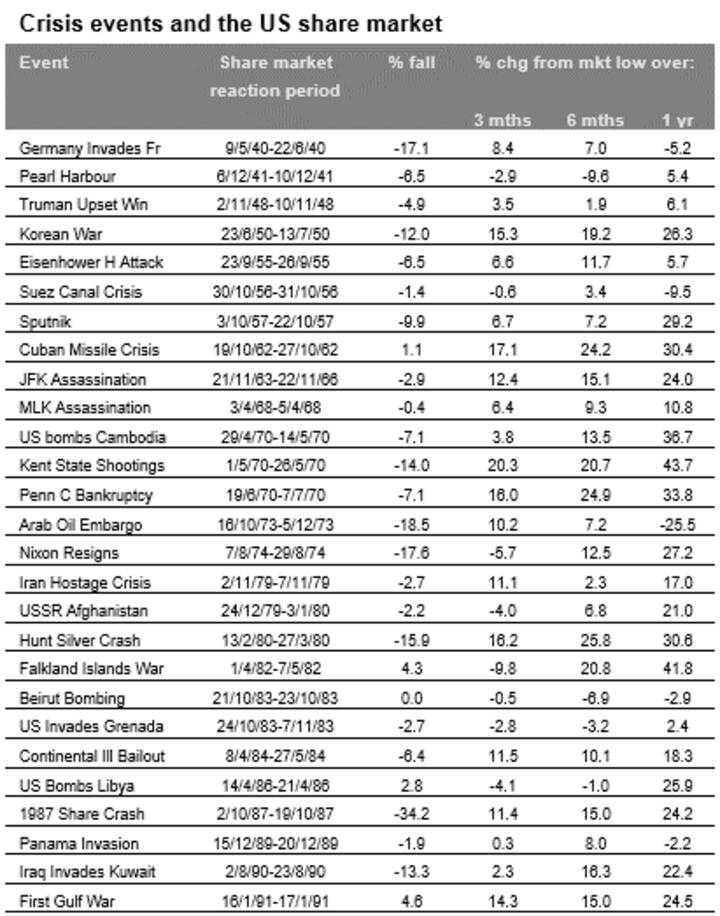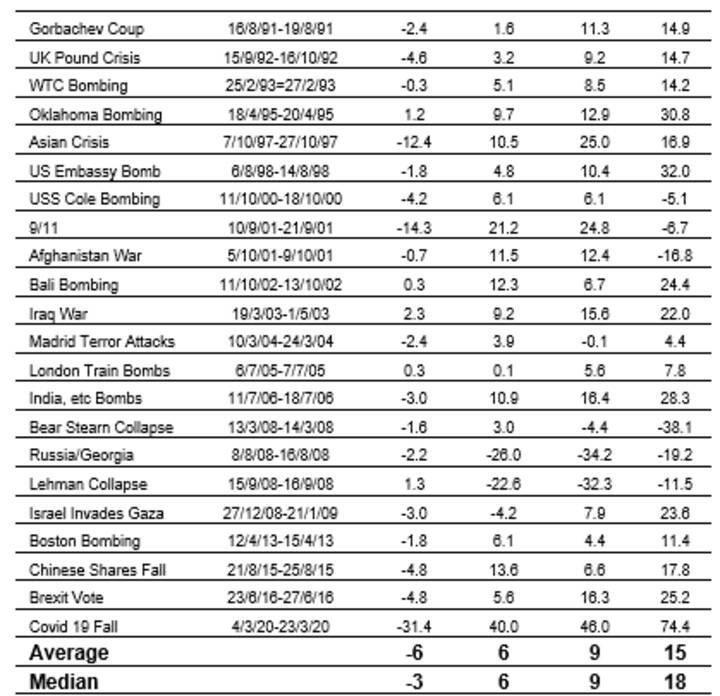After speaking with a lot of our clients over the last week or so on the escalating situation in Ukraine and the heightened concerns over how this will impact their investments and how they should react we felt it would be good to provide an overview and some relevant articles for those who wish to delve deeper.
This article from Chief Economist Dr Shane Oliver provides a clear and easy to understand outline of expected effects on markets and some great historical data on the impacts of Crisis (war or otherwise) on markets initially and over the next 12 months:
Key points about the current situation and your portfolios:
- Ukraine tensions have escalated with Russia ordering troops into Ukraine regions already occupied by Russian separatists.
- Share markets are at high risk of more downside on fear of further escalation and uncertainty about sanctions/gas supply to Europe.
- The history of crisis events shows a short term hit to markets followed by a rebound over 3 to 12 months.
- Given the difficulty in timing market reactions to geopolitical developments the best approach for most investors is to stick to an appropriate long term investment strategy.
- The Dow Jones Average drop during a crisis is 6% with an average recovery in 12 months of 15%.
Click here to read the full article
Our Investment Committee and Financial Advisors have been keeping a close eye on this situation and have outlined their thoughts and approach below:
At this time of heightened geopolitical risk there is associated volatility as markets respond to news flow. While this can be disconcerting in the moment, our view and our experience is that market timing (making investment decisions based on short term news flow) should rarely be used. To date the only time when we have significantly reduced exposure to growth assets was when the pandemic first started and the global economy went into shutdown. Other than rare events like these (when we see potential systemic issues with the financial markets or economy) the better strategy is to stay the course and manage the fluctuations of the share market rather than actively trying to pick the tops and bottoms of the market. As a renowned investor Peter Lynch observed, “Far more money has been lost by investors preparing for corrections or trying to anticipate corrections than has been lost in corrections themselves”.
Like we saw recently during the start of Covid, these corrections should be seen as a buying opportunity rather than a reason to sell and lock in losses.
Following is some more detailed information and articles for those who would like to delve deeper:
- History shows, especially with wars that were not a surprise (they escalated over time like the Ukraine situation) that markets actually perform well once war breaks out:
https://www.investopedia.com/solving-the-war-puzzle-4780889 - On average, the S&P 500 has been 6.5% in negative territory 3 months following an armed conflict (either global or smaller), and around 13% positive 12 months after said conflict.
- The Vietnam war and both of the Gulf wars are examples of conflicts that brought about extremely short-lived drops followed by long upward trajectories. When the Soviet Union invaded Afghanistan in 1979, there was a 12-day consecutive index drop of about 3.8% in total. When Russia later took Crimea in 2014, there was a 2% drop:
https://seekingalpha.com/article/4488660-how-stock-market-reacts-war-based-crash - Goldman Sachs worst case scenario analysis said an outright conflict with punitive sanctions could send the S&P 500 6% lower and the Nasdaq 10% lower from Friday’s close. That is based on recent market moves in relation to the ruble and calculations that the currency is still 10% off its maximum undervaluation level of the past two decades:
https://www.bloomberg.com/news/articles/2022-02-22/goldman-team-says-s-p-may-drop-6-if-ukraine-conflict-worsens
As usual if you have any questions or concerns we are here for you, please reach out!


